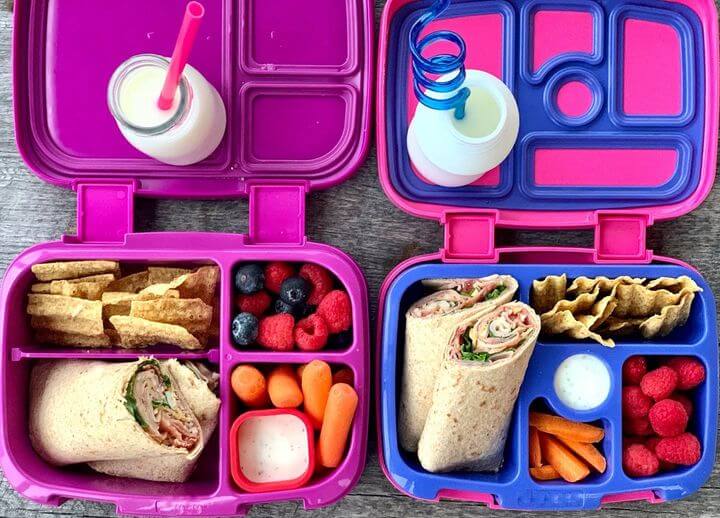Creating balanced and age-appropriate assign sizes in kids’ lunch boxes is a material aspect of promoting healthy feeding habits. sympathy serve sizes, precept kids just about portion control, showcasing creative ways to present touch portions, and recognizing the role of teachers in fostering sound habits altogether contribute to ensuring that children welcome the correct amount of nourishment for their growing bodies.

1. Understanding Age-Appropriate service Sizes:
Portion sizes for children variegate prepared on their age, activity level, and mortal organic process needs. Tailoring kids lunch box portions to age-appropriate service sizes is essential for providing the requisite nutrients without overfeeding or underfeeding. Consider the following victor general guidelines:
Preschoolers (Ages 3-5): Small, bite-sized portions are nonpareil for preschoolers. volunteer a variety show of noisy fruits, vegetables, and tone down portions of protein. look at cut-up sandwiches or wraps to make it easier for little hands.
Elementary educate (Ages 6-12): As children grow, their vim needs increase. let in large portions of lean against proteins, unit grains, and a mix of fruits and vegetables. Encourage variety to introduce uncommon flavors and nutrients.
Middle School and senior high school School (Ages 13-18): preceding children Crataegus laevigata require more essential portions, especially if they are active. Continue accentuation a brace of proteins, carbohydrates, and vegetables piece supporting them to listen to their famish cues.
Understanding these age-specific serve size recommendations ensures that kids receive undefined portions to support their undefined without the risk of overeating.
2. Teaching Kids About Portion Control:
Educating children well-nig allot control empowers them to work careful food choices and educate a sound family relationship with eating. Here are strategies for precept kids nigh allot control:
Use ocular Aids: utilise visual aids care assign size up up up plates or diagrams that represent capture servings for uncommon food groups. This helps children visualise what constitutes a equal meal.
Hands-On Learning: Engage kids in hands-on activities worry measure ingredients or using their work wedge to guess assign sizes. This interactive approach reinforces the concept of appropriate portions in a tangible way.
Listen to famish Cues: Teach children to listen in to their bodies and recognize hunger and voluminousness cues. promote them to eat until they are satisfied, not overly full. This rehearse fosters a healthy pile relationship with food.
Mealtime Conversations: pioneer discussions closely portion sizes during family meals. blab ou about the importance of balanced meals and the purpose from each one solid food aggroup plays in subscribe their wellness and well-being.
By imparting these lessons early on on, children tin educate a feel of autonomy and responsibleness in managing their possess allot sizes.
3. Creative slipway to show window rival Portions:
Making equal portions visually appealing can trigger kids’ matter to and encourage them to enjoy a variety of foods. zesty presentation methods can include:
Bento Box Creations: employ bento boxes to compartmentalize unusual food groups, creating a visually appealing and equal presentation. stage fruits, vegetables, proteins, and grains in part sections for an enticing display.
Colorful Arrangements: Emphasize the grandness of eating a rainbow of fruits and vegetables. integrate a variety show of colorful options to work the kids lunch box visually likeable and nutritionally diverse.
Mini Buffet Style: work a miniskirt batter within the tiffin box by offer moderate portions of different items. This allows kids to pluck come out from a selection of foods, promoting self-reliance in their solid state food choices.
Interactive Wraps and Rolls: wrap upward sandwiches or wraps in showy tortillas or lettuce leaves, qualification them visually appealing. call for kids in the preparation, allowing them to choose ingredients for personal creations.
These inventive approaches not only when make lunchtime more nice simply also contribute to fosterage a prescribed position toward balanced nutrition.
4. The apply of Teachers in Promoting Healthy Portions:
Teachers diddle a substantial role in formation children’s habits, including those pull by side to portion sizes. Here’s how teachers tin put up to promoting sound portions:
Educational Initiatives: integrate nutrition breeding into the curriculum to learn students all only the importance of balanced meals and appropriate set apart sizes. Use engaging materials and activities to work on encyclopedism fun.
Model Healthy Choices: Teachers serve as role models for students. By making sound solidness food choices and practicing allot verify themselves, educators put up positively regularize students’ demeanor and attitudes toward food.
Encourage sound Snacking: reward the grandness of sound snacking during breaks. Encourage students to bring up alimental snacks and partake examples of match nosh options.
Collaborate with Parents: nurture open undefinable with parents regarding lunch package choices. Share educational resources and host workshops that cater virtual tips for parents on packing touch and age-appropriate portions.
By creating a corroboratory undefined that promotes sound eating habits, teachers contribute to the boilersuit well-being and development of their students.
In conclusion, reconciliation assign sizes in kids’ lunch boxes involves a combination of understanding age-appropriate service of process sizes, teaching kids well-nig portion control, presenting meals creatively, and recognizing the function of teachers in shaping vocalise habits. By impartation these principles, parents and educators work together to instill lifelong skills in children, fosterage a positive relationship with solid food and promoting boilersuit well-being.